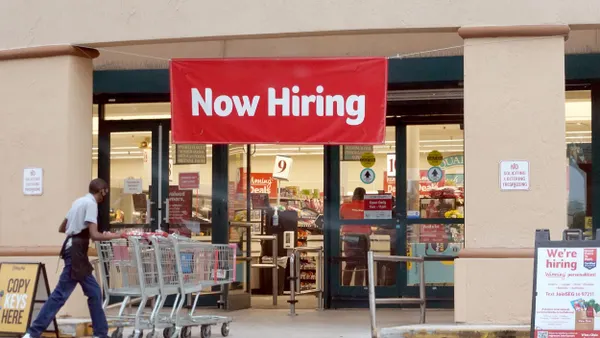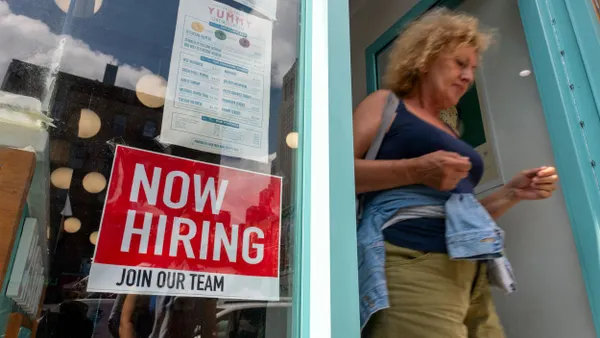The average time between from beginning to end of the job interview process in 22.9 days in the U.S., according to Glassdoor, marking an increase in 10 days from four years ago. This number even accounts for variables like differences in job title and industry, leading some employers to begin questioning how and why it’s reached such new heights.
Part of the issues, as explained in Glassdoor’s study, may be due to an increase in background checks, skills tests, drug tests and other screenings done before hiring. But for many companies, it’s a tad more complicated than that.
HR Dive spoke to a couple experts in the field to discern potential time-to-hire pitfalls and what companies can do to improve their recruitment process.
Stop buying the same candidates over and over again
To assist with recruitment, most companies have multiple sources for candidates in conjunction with an applicant tracking or HR information system, said Rosemary Haefner, Chief Human Resources Officer for CareerBuilder. While that’s effective in sourcing and obtaining candidates, these systems often bury any sort of “search” functionality. When a recruiter needs to fill a position, the first instinct is to go back to strong candidates who they’ve spoken to in the past – but without any way to search through or re-engage those candidates, recruiters lose valuable turnaround time.
“We found that currently 49% of HR managers said they do not re-engage prior candidates for new open positions, 52% said they focus on current candidates and 37% said no one has time to do so,” Haefner said. “So unless changes are made in the recruitment and hiring process, companies will continue to have an unnecessarily long time-to-hire.”
Often, a candidate interviewed for one opportunity may not be the best fit but could be a great fit on another team in the company, said Bernadette Palumbo, Director of Talent Acquisition, University Relations and Manufacturing Workforce Development at BASF. They capture that information and remain in communication with those candidates for when future opportunities arise.
Use big data
For many issues (including buying the same candidates over and over again), HR needs to do a better job of remaining on top of the data they have – especially during recruitment.
“Using big data to identify ROI and productivity of current recruitment campaigns and recruiters will help make positive changes to the recruitment process,” Haefner said. “Two-thirds of employers who use big data in recruitment say it lowered their cost-per-hire and time-to-hire.”
Big data cuts costs and frees up HR managers’ and recruiters’ time to focus more on the candidates, adding up to shorter time-to-hires overall.
Focus on transparency and candidate experience
The simplest way to condense time-to-hire, according to Palumbo: If you promise to get back to someone, follow through.
“It seems simple: if you invite a candidate onsite to interview, ensure he or she receives robust feedback,” Palumbo said. Even if no offer is extended, candidates will leave with a positive impression of your company that they likely will share with those they know, including some who may be looking for new opportunities – meaning potentially more people to interview and hire.
The interview and hiring process should be seen as the first blocks of a budding relationship, even if those candidates don’t end up working for the company. The general recruitment experience (application, interview style, etc.) varies from company to company, but all need to ensure that candidates are aware of where they are in the process at all times, Palumbo said.
“Even an unsuccessful candidate can leave with a positive impression of the company,” Palumbo added.
While some aspects of time-to-hire are out of an HR manager or recruiter’s hands thanks to government regulations or similar rules, these tips can guide a company toward spots of solvable weakness and shorten time-to-hire in key areas.













